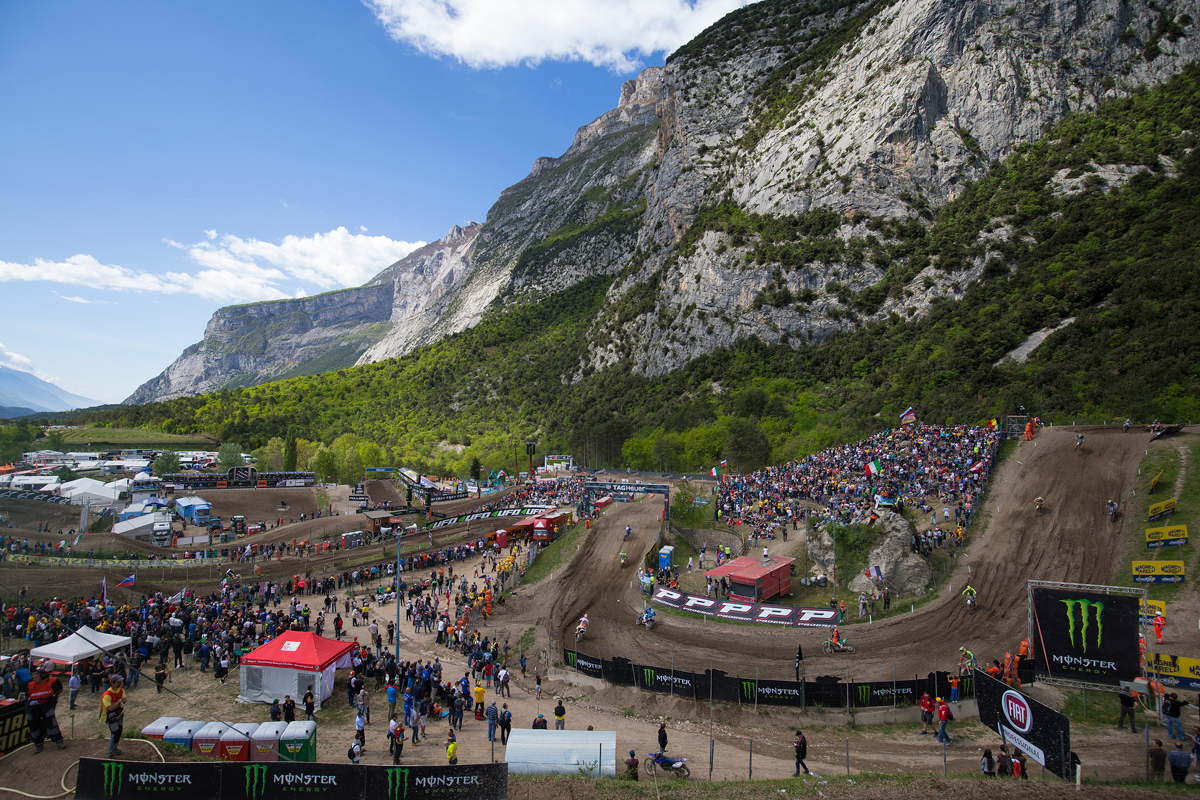Sometimes it feels like there is always some type of issue chasing MXGP. The general level of the FIM Motocross World Championship is better, more competitive, more presentable and arguably more followed that at any other time in recent memory.
Two years ago there was wholesale concern by the riders and teams that the tracks were not being well-prepared enough and it was affecting the racing as well as the level of safety. Youthstream took steps with an overhaul of the maintenance crew and complaints dimmed and are nowhere near as noisy as they used to be. In the last month the sadness around Grand Prix of Czech Republic pushed forward a subject of whether a comprehensive European Championship support card could and should be a staple at every GP venue. The latest hot potato in the paddock is the alarming employment prospects for riders in the premier class and the dwindling availability of saddles.
As Youthstream Vice President David Luongo rightfully points out in our short catch-up in this issue riders are still scrabbling for deals and talks are ongoing so it is hard to make a serious judgement on the state of play in MXGP right now. It is worrying however for the calibre of rider that could find all doors closed for the coming season as manufacturers pull the purse strings to contemplate a long racing campaign and try to support satellite efforts as best they can.
Luongo speaks the truth about how the European Championship system is funnelling prospects into MX2. Speaking with Kemea Yamaha rider coach and former World Champion Jacky Vimond at Lommel, the Frenchman pointed out the increased level of professionalism seen in EMX teams and riders now; youngsters are faster, fitter and able to be more dedicated in their chase to be a Pro. This means MX2 is only going to be become ‘richer’ over the coming seasons.
So far, so good (even if the thorny subject of whether 85 and 65cc riders should be competing on certain GP tracks remains a very valid). Riders then hit 23 years of age and the current situation in MXGP suddenly has a crack in the system. There is no denying that the premier class has the best graduates and talents from EMX and MX2 but there is a feeling at the moment that the cup is overflowing. If seven factory teams can only field two saddles and the amount of satellite squads does not increase then the blue ribbon category becomes a bottleneck.
Luongo rightly says that the whole pyramid structure cannot be adjusted to accommodate a few individuals that have fallen foul of timing and luck, but a strategy to harness, protect and encourage opportunities for riders to still compete, learn and develop once MX2 is no longer an option has to be a reality. And don’t assume that MX2 berths will also be in bountiful supply.
Satellite efforts range greatly in their resources and professionalism but the fact that someone is passionate and committed to a nineteen/twenty race championship should be encouraged and cherished. Of course there is help from the factories but the talent list of Strijbos, Bobryshev, Tixier, Paturel, Searle, Guillod, Nagl should not be dismissed so lightly. At the very least these athletes cannot be simply cast aside for their contribution to the series over the years.
Everyone has their own story for why they have missed the cut: injuries, unrealistic demands, too expensive, unable to gel with the team or develop a bike. In talking with team managers and factories we are now in a frantic period of riders looking for solutions. One factory boss said to me in Lommel that a former Grand Prix winner was offering to ride for expenses only in 2018. In this team’s market it is the riders that are feeling the pinch and we published a story two weeks ago on the future of 450cc bikes where many technical heads in MXGP voiced their opinion that the rider is still the most crucial and fundament part of the racing package. It is heavily ironic that factory teams are turning towards younger (and cheaper?) representatives and throwing some people’s career into the balance as they near their thirties when Tony Cairoli has a lead of almost 100 points in the championship standings and will turn 32 on September 23rd.
Contract timing has something to do with it. Febvre, Gasjer, Desalle, Cairoli, Herlings, Paulin and Anstie were already tied up for 2018 and there will be a bigger merry-go-round in ten months time. This means riders might have to compromise and get creative in order to stay in the game and hope for the next round of talks for 2019 and when MX2 has very few names to spit out (there are four for 2018: Seewer, Lieber, Petrova and Paturel and only two have found a home in MXGP so far). That could mean training and prepping on their own terms and hoping for a fill-in slot, or somehow investing in themselves like Dean Wilson did at the start of this supercross year.

Some sympathy for the riders then but also concern for the state of the gate in the years to come. Such is the level of MXGP now that athletes without the support of a slick and well-backed team can only aspire to the top ten. The quality of the leading troupe is superb but care should be taken to look at the second tier: how these teams can survive, how they can remain a key and competitive stepping-stone for the likes of Paturel who has to jump out of MX2 and finds the factory windows bolted, and how they continue to look at Grand Prix as something achievable and possible without having to downscale to just a European focus.
There is no magic answer. Satellite teams should come together – as they have in MotoGP – to guard some sort of status quo and ask for dispensation or some collective guidelines to be a strong and valued part of MXGP. Can raising the age limit to 24 or 25 in MX2 help alleviate some pressure and allow late developers or those cursed by injury one or two more crucial seasons? Should there be an emphasis on MXGP athletes reaching their prime physically and mentally and in terms of experience by their late (instead of early) twenties? It means a longer career, building a firmer fanbase and consolidates MXGP further around big names in key markets (e.g. Bobryshev and Russia, Nagl and Germany). Could older riders be allowed a ‘one year’ return card to MX2? Could the MXGP class have a European contest within? A separate champion in the 450s and therefore another route for the sport’s graduates to look at?
Talking never stops it seems, and there is a certain amount of sympathy for the promoters who have to listen to so many opinions and beliefs on how the sport should be run and grown. The state of MXGP in 2018 and the cast list will not be measured yet but I hope the furore and level of concern is one of the temporary ‘dramas’ of sport and not a marker of where MXGP is cruising.
Photos by Ray Archer








